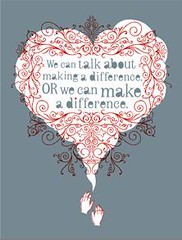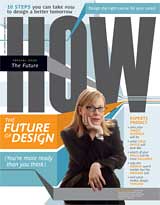Commentary: Two Worlds
There is the world of the haves and the world of the have-nots. The world of the givers and the world of the takers. The world of the needy and the world of the needless. What struck me most was the notion that the have-nots, the givers and the needy fundamentally maintain the world of the haves, the takers and the needless. These two worlds exist simultaneously and in the same place, yet they are separate. The people that make up these two worlds have much interaction, yet they don’t quite overlap, and they try to get away with as little acknowledgement of the other as possible. I am lucky: I am one of the needless. I go from place to place, hotel to hotel, restaurant to restaurant and everything is in place for me: a clean bed, a good meal, a fine time. Those that are living in the “other world” make these things happen for me. They make it happen for all of us that are lucky enough to be needless. What I couldn’t help but notice, as I traveled from city to city, was the one thing both worlds have in common: the walls in place keeping the needy needing and the needless in control. There is an unspoken invisibility between these two worlds, with little or no eye contact, meaningless or irrelevant verbal discourse, with virtually no acknowledgement of the magnitude of the co-dependency of these two worlds. Why is it that the needless have such little regard for the needy? Why is that the person changing our sheets or cleaning our toilet bowl in a hotel room is someone that we will rarely look in the eye? Are we afraid to acknowledge our co-dependency? Are we embarrassed by what we ask people to do in the name of service? I think we are.
But I also think that those that service the needless are far less needy than we think they are. I believe that there is strength of character in their ability to interact with what is usually an intolerant, superficial and careless contingent of society. I think it takes great patience to take care of a group of people that have little time for them, and chances are, even less respect. Our culture perpetrates the hierarchies of these two worlds. Both depend on each other, and while the needy are forced to be polite and gracious by the very nature of their service, the needless tend to be rather rude and are often nasty in the exchange of services. What I think we fail to recognize is that these hierarchies are man made. In the grand scheme of our journey here, we are all born and die the same way. Whether we are wearing nicer clothes or sleeping on nicer sheets is irrelevant. We all deserve the same kindnesses. Whether we have the funds to pay for them or not is irrelevant.
Wednesday night I went to a very posh restaurant in Los Angeles. It was not only quite fancy, it was also rather trendy, clearly an “it” spot. Limousines lined the sidewalk in front of the venue, and beautiful people milled about, waiting for tables and to be seen by the other beautiful people posing and lolling about. After we finished our meal, my colleagues and I waited outside the restaurant for a taxi to take us back to our hotel. It was late in the evening, and as we stood there, I took in all the action around us. I looked across the street and couldn’t help but notice a man standing in an extremely large, brightly lit window on the second floor of a luxurious apartment building. He was peering down at the crowd below. I wondered what he was thinking as he took in the scene before him. Then he bent down. As he stood back up I saw that he was a professional window washer and he was cleaning the windows. And there it was, evident for everyone to see: the two worlds. As he cleaned the barrier between us, I couldn’t help but hope that after he was finished, maybe, just maybe, we could all see the one world that unites us a bit more clearly.

















